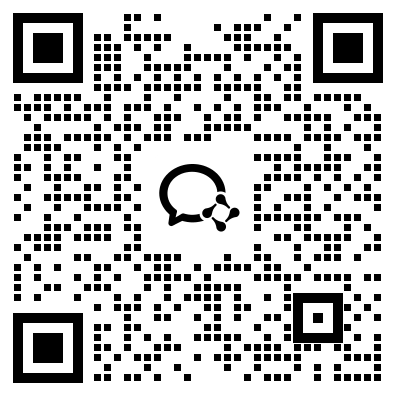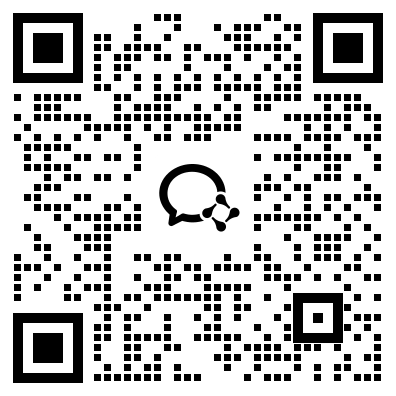特惠-26考研冲刺
特惠-27考研课
双证-在职硕士
免联考-同等学力
复试分数线
26复试全面指导
模拟复试面试
26考研-全套真题
26考研估分
保研-路线图
27考研-智能择校
27考研-英语测评
27考研-新大纲对比
热门-计算机择校

扫码加入训练营
牢记核心词
学习得礼盒
2015考研英语复习正是强化复习阶段,考研英语阅读在考研英语中占了40分,所以考研英语阅读是英语科目中重要的一项。新东方名师范猛老师曾建议过考研生需要坚持每天泛读10-15分钟的英文原刊。强烈推荐了杂志《经济学人》.杂志中的文章也是考研英语的主要材料来源.希望考研考生认真阅读,快速提高考研英语阅读水平。
Birds' magnetic sense
鸟类的磁性感知能力
Columbarian Columbuses
禽类新发现
Birds can navigate by the Earth's magnetic field.How they do it is still a mystery
鸟类能够利用地球磁场导航。机理尚不明确
WHERE would people be without magnetic compasses?
人类没有指南针会怎样?
The short answer is: lost.
很简单:迷失方向。
By giving human beings a sixth sense—an ability to detect the hitherto invisible magneticfield of the Earth—the compass proved one of the most important inventions ever.
指南针给了人类第6感,使人能辨别地球无形的磁场,成为最重要的发明之一。
It let sailors navigate without sight of the night sky.
海员不用观察夜空便可以辨识方向。
And that led to the voyages of discovery, trade and conquest which created the politicalgeography of the modern world.
人们用它进行海上探索,海上交易,攻城掠地,进而开创了现代世界的政治版图。
Imagine, then, what animals which had their own, built-in compasses could achieve.
有些动物有自己内嵌的指南系统。可以想象得出这些动物的能力。
They might spend their summersdoing the English Season in Glyndebourne or Henley, and then overwinter in the warmth ofMombasa.
它们可以在戈林德伯恩或亨利镇消暑,享受自己的英格兰夏日。然后在温暖的蒙巴萨岛过冬。
They might strike out, like intrepid pioneers, from Angola to Anchorage.
它们可以像无畏的开拓者一样,从安哥拉独闯安克雷奇。
They might even, if truly gripped by wanderlust and a hatred of the darkness, live innear-perpetual daylight by migrating from Pole to Pole.
假如它们为旅行所牵绊,为黑暗而烦恼,它们会穿梭于两极之间,过着永远有光亮的生活。
And that is just what some birds do.
以上这些只是鸟类能力的一部分。
Swallows travel between Europe and Africa. Northern wheatears fly from Africa to Alaska,and back.
家燕在欧洲和非洲之间迁徙。石栖鸟在非洲和阿拉斯加之间迁徙。
Arctic terns each year make the journey from one end of the planet to the other.
每年,北极燕鸥都会从地球的一端飞到另一端。
And they can do it, at least in part, because they do have a magnetic sense denied tohumans.
它们能这么做的原因之一便是鸟类可以感知磁性,而人类不行。
The most familiar avian navigation trick is that pulled off by homing pigeons.
人类最为熟知的鸟类导航技巧就是通过研究信鸽而得到的。
As a consequence pigeons have often found themselves at the sharp end of investigationsabout how bird navigation in general, and magnetic sense in particular, actually work.
鸽子便处在了人类研究的尖端。人们用它研究鸟类整体的导航机能,用它特别研究磁性感应机制。
That pigeons have such a sense was shown more than 40 years ago, by William Keeton ofCornell University, in upstate New York, who attached magnets to pigeons to see if they couldstill home.
鸽子显示出此种能力是在40年前。当时,纽约州北部康乃尔大学的William Keeton把磁体系在鸽子身上,观察它们是否能够回家。
They could not, though birds fitted with non-magnetic dummies managed perfectly well.
结果是它们不能,但是那些带有仿磁体的鸽子却回家。
Since then, experiments on other species have shown magnetic sensitivity is commonamong birds. What these experiments have not shown, however, is how the birds manage it.
此后的实验表明,磁性感知能力是鸟类共有的,但并没有解释是如何操作的。
See it? Hear it? Smell it?
视觉?听觉?嗅觉?
There are two theories.
理论上的说法有两种。
One is that the magnetic sensors are grains of magnetite, a form of iron oxide which, as itsname suggests, is easily magnetised.
一种是鸽子具有磁感应器,这是一种以氧化铁形式存在的磁铁矿粒子。顾名思义,这种物质极易磁化。
The other is that the Earth's magnetic field affects a particular chemical reaction in theretina in a way that reaches into the arcane depths of quantum mechanics.
另一种说法认为,地球磁场能对视网膜里特定的化学反映产生影响,在某种程序上可以达到神秘量子力学的深度。
The magnetite hypothesis concentrates on birds' beaks.
磁铁矿假说的焦点是鸟类的喙。
Magnetite grains are common in living things, and are known to be involved in magneticsensing in bacteria. In birds they are particularly abundant in the beak.
磁铁矿粒子是生物共有的,广泛存在于鸟的喙中。
So last year David Keays of the Institute of Molecular Pathology, in Vienna, dissected thebeaks of nearly 200 unfortunate pigeons, to find out more.
去年,维也纳分子病理学研究所的David Keays对将近200只鸽子进行了解剖,以期得到更多发现。
What he discovered was not encouraging.
但是,他发现的并不令人鼓舞。
There were, indeed, lots of magnetite grains.
大量铁磁矿粒子确实存在。
But he had expected they would congregate in some sort of specialised sensory cell akin tothe taste buds of the tongue or the hair cells of the ear.
他原以为铁磁矿粒子会聚集成为专门的感觉细胞,类似于舌头上的味蕾和内耳毛细胞。
Instead, he found that the beak's magnetite is mostly in macrophages.
但是,他发现,喙部的铁磁矿主要以巨噬细胞的形式存在,
These are cells whose job is to wander around amoeba-like, chewing up bacteria and debrisfrom other body cells as they go.
这些细胞的职能是以游离细胞的形式对细胞残片及病原体进行噬菌。
Not, then, likely candidates as magnetic sensors.
因此,巨噬细胞不可能具有磁感应功能。
Other experiments, though, do suggest the beak is involved.
其它的实验也包含了对喙的研究。
The nerve that connects it to the brain is known as the trigeminal.
联结喙与脑的神经叫三叉神经。
When Dominik Heyers and Henrik Mouritsen of Oldenburg University, in Germany, cut thetrigeminals of reed warblers the birds' ability to detect which way was north remainedintact.
德国奥尔登堡大学的Dominik Heyers和Henrik Mouritsena切断了苇莺的三叉神经,保留了它们辨别北方的能力。
They did, however, lose their sense of magnetic dip.
然而,这些鸟却失掉了磁倾角的感应力。
Dip indicates latitude, another important part of navigation.
磁倾角可以指示纬度,是导航的重要组成部分。
To confuse matters further, some people accept Dr Keays's interpretation of what is goingon in the beak,
Keays对鸟喙解释使情况更加复杂。但有些人还是接受了他的说法。
but think that the relevant magnetite grains are elsewhere—in the hair cells of the ear,which are also rich in iron oxide.
但是这些人认为鸟身体的其它部位也存在磁铁矿粒子—内耳毛细胞。氧化铁也富含这种粒子。
If they are right, then from the birds' point of view they are probably hearing the magneticsignal.
假如这些人的假定正确,从鸟的角度来看,它们可能听得到磁信号。
The main alternative to the nasal-magnetite hypothesis, though, is not that birds hearmagnetic fields, but that they see them.
鼻腔内存在磁铁矿的假说 并不是鸟类可以听到磁场,而是能看到磁场。
One line of evidence for this is that part of a bird's brain, called cluster N, which gets its inputdirectly from the eyes, seems to be involved in magnetic sensing.
关于此的证明是,鸟大脑中有一部分叫cluster N,可以直接得到眼部输送的信息,好像跟磁场感应有联系。
Experiments Dr Mouritsen's team conducted on robins showed that destroying cluster Ndestroys a bird's north-detecting sense, and other experiments, on meadow pipits, showthat cells in cluster N are far more active when the birds are using their magnetic sense thanwhen they are not.
博士Mouritsen研究团队对知更鸟进行了实验,得出推断。实验显示破坏知更鸟的cluster N,也就破坏了它们识别北方的能力。研究团队又对草地鹨进行了实验。实验显示,鸟类使用磁感应能力的时候,clusterN细胞异常活跃。
The problem with this idea is that birds' eyes do not have magnetite in them.
此种假说的问题在于鸟类的眼部没有磁铁矿。
If they do house magnetism detectors, those detectors must be something else.
假如它们真的起到了磁探测器的作用,那么肯定另有他物。
That something, according to a hypothesis advanced by Klaus Schulten, who works at theUniversity of Illinois at Urbana-Champaign, is a type of retinal protein called acryptochrome.
在伊利诺斯大学香槟分校工作。据Schulten,这种他物是一种名为cryptochrome的尿视黄醇蛋白。
When hit by light, a cryptochrome produces pairs of molecules called free radicals that areelectrically neutral but have unpaired electrons in them.
当受到光照时,就产生名为自由基的分子对。这种自由基呈电中性,其中含有未配对电子。
Electrons are tiny magnets, so they tend to attract each other and pair up in a way thatneutralises their joint magnetic fields.
电子就是微小的磁性体。因此,当它们的联合磁场中合之时,电子就会相互吸引,就会形成组对。
Unpaired electrons, however, remain magnetic, and thus sensitive to the Earth's field.
但是,那些不成对电子仍具磁性,对地球磁场很敏感。
Moreover, because the unpaired electrons in the free radicals were originally paired in themolecule that split to form the radicals, quantum mechanics dictates that these electronsremain entangled.
因为自由基中的那些不成对电子最初存在于分裂成为自由基分子之中,量子力学规定这些电子依然是绞缠的。
This means that however far apart they move, what happens to one affects the other'sbehaviour.
也就是说,无论双方离得有多远,一方的行为会影响另一方。
Calculations suggest the different ways the two radicals feel the Earth's field as theyseparate is enough to change the way they will react with other chemicals—including onesthat trigger nerve impulses, and that, via entanglement, they can transmit this informationto each other, and thus affect each other's reactions.
此种假设表明,当两种自由基分离时,它们感知地球磁场的相反作用足够能够改变它们与其它化学物质相互反应的方式――包括那些能产生神经脉冲的化学物质。同时,通过绞缠,它们彼此能互相信息,从而产生相互影响。
This, the calculations indicate, would be enough for a bird's brain to interpret the magneticfield.
此种假设表明,这足可以让鸟脑识别磁场。
It would probably see a pattern of spots before its eyes, which would remain stationary asit scanned its head from side to side.
鸟眼可能会看到眼前有某种样式的斑点图案,当鸟类对其识别之时,眼睛是固定的。
And some birds do, indeed, scan their heads this way when assessing the direction ofmagnetic north.
其实,当鸟类辨别地磁北极之时,确实能够用此法扫描头部。
It is possible, of course, that both hypotheses are right, and that birds have two magneticsenses, with one perhaps concentrated on north detection and the other on detecting dip.
当然,两种假说都有正确的可能。鸟类也有可能有两套磁感应能力,一种集中在北方,另一种集中于磁倾角。
But there is something particularly poetic about the idea that even part of this mysterioussixth sense depends on a still-more-mysterious quantum effect—one that Einstein himselfdescribed as spooky action at a distance.
这种神秘的第六感觉依赖于更加神秘的量子力学效应。对此还有一种诗意般的解释,即爱因斯坦自己说的鬼魅般的超距作用。
词语解释
1.magnetic field 磁场
The interplanetary magnetic field fluctuatesgreatly in magnitude and direction.
行星际磁场在不同的星等和方向强度差别很大。
Yet another longstanding mystery is why mercuryhas a magnetic field.
另一个悬而未决的谜团是为什么水星上有磁场。
2.strike out 自成一格;用力打
Here is where your competition will strike out.
这里就是你的竞争将会罢工。
How the present situation of this kind of strike out?
这场罢工现在的情况怎么样了?
3.hatred of 仇恨
Why is this connected to your hatred of mack?
为什么这跟你对迈克的仇恨有关?
Hatred of the roma has become a defining issue.
对罗马的憎恨已经成为了决定性问题。
4.at least 至少
Read at least 30 books.
至少读30本书。
At least august was quiet.
至少八月是安静的。
进入8月,很多高校2015年考研招生简章已经发布,请广大15年考生关注,预计到8月底9月初,2015年全国硕士研究生招生简章会陆续发布完成,新东方在线小编第一时间跟踪发布,请大家收藏关注!另有研究生专业目录、考研参考书等最新考研信息,帮助考生及时了解目标院校招生政策及信息。另有西医综合专业考试
新东方名师考研课程 购买进行中
【英语阅读资料】这里有↑↑↑

 资料下载
资料下载
2014年-2025年考研历年真题汇总
发布时间:2024-04-25扫码添加【考研班主任】
即可领取资料包
考研大纲PDF电子版下载-历年(附解析)
发布时间:2024-04-25扫码添加【考研班主任】
即可领取资料包
2026年考研政数英备考资料zip压缩包
发布时间:2024-04-25扫码添加【考研班主任】
即可领取资料包
考研英语大纲词汇5500打印版(基础必备)
发布时间:2024-04-25扫码添加【考研班主任】
即可领取资料包
新东方在线考试模拟题【12套】
发布时间:2024-04-25扫码添加【考研班主任】
即可领取资料包
2026年考研专业课知识点总结
发布时间:2024-04-25扫码添加【考研班主任】
即可领取资料包
新东方考研资料下载地址
发布时间:2023-05-17新东方在线考研资料合集
下载方式:微信扫码,获取网盘链接

目录:
1.2013-2023年近10年政数英真题及解析PDF版(新东方)
2.2013-2023年专业课考试历年真题及解析PDF版
3.24考研复习备考资料大合集:大纲+备考资料+词汇书+考前押题+自命题
资料介绍:
1.2013-2023年近10年政数英真题及解析PDF版(新东方)
 、
、
2.2013-2023年专业课考试历年真题及解析PDF版


3.24考研复习备考资料大合集

3.24考研复习备考资料:考研大纲

3.24考研复习备考资料:政数英备考资料+自命题真题

------------------
考研备考过程中,尤其是专业课部分,参考往年的考试真题,对于我们的复习有更好的帮助。北京大学考研真题资料都有哪些?小编为大家进行了汇总。
北京大学考研真题资料-公共课

北京大学考研真题资料-专业课


以上就是关于“北京大学考研真题资料下载(历年汇总)”的整理,更多考研资料下载,请关注微信获取下载地址。
2024考研公共课必背知识点汇总
发布时间:2023-01-03扫码添加【考研班主任】
即可领取资料包
2013-2023考研历年真题汇总
发布时间:2023-01-03扫码添加【考研班主任】
即可领取资料包
考研英语大纲词汇(PDF可打印)
发布时间:2023-01-03扫码添加【考研班主任】
即可领取资料包
2024考研专业课知识点总结
发布时间:2023-01-03扫码添加【考研班主任】
即可领取资料包
2023考研政治 内部押题 PDF
发布时间:2022-11-16扫码添加【考研班主任】
即可领取资料包
徐涛:23考研预测六套卷
发布时间:2022-11-16扫码添加【考研班主任】
即可领取资料包
考研政数英冲刺资料最新整理
发布时间:2022-11-16扫码添加【考研班主任】
即可领取资料包
23考研答题卡模板打印版
发布时间:2022-11-16扫码添加【考研班主任】
即可领取资料包
2023考研大纲词汇5500PDF电子版
发布时间:2022-07-28扫码添加【考研班主任】
即可领取资料包
考研历年真题(公共课+专业课)
发布时间:2022-07-28扫码添加【考研班主任】
即可领取资料包
考研英语阅读100篇附解析及答案
发布时间:2022-01-07扫码添加【考研班主任】
即可领取资料包
新东方考研学霸笔记整理(打印版)
发布时间:2022-01-07扫码添加【考研班主任】
即可领取资料包
2001-2021年考研英语真题答案(可打印版)
发布时间:2022-01-07扫码添加【考研班主任】
即可领取资料包
考研英语词汇5500(完整版下载)
发布时间:2022-01-07扫码添加【考研班主任】
即可领取资料包
2022考研政审表模板精选10套
发布时间:2022-01-07扫码添加【考研班主任】
即可领取资料包
历年考研真题及答案 下载
发布时间:2021-12-09扫码添加【考研班主任】
即可领取资料包
考研政审表模板汇总
发布时间:2020-06-17扫码添加【考研班主任】
即可领取资料包
近5年考研英语真题汇总
发布时间:2020-06-17扫码添加【考研班主任】
即可领取资料包
考研英语大纲词汇5500
发布时间:2020-06-17扫码添加【考研班主任】
即可领取资料包
2022考研12大学科专业排名汇总
发布时间:2019-11-21扫码添加【考研班主任】
即可领取资料包
2023考研政治复习备考资料【珍藏版】
发布时间:2019-11-21扫码添加【考研班主任】
即可领取资料包
考研英语万能模板+必备词汇+范文
发布时间:2019-11-21扫码添加【考研班主任】
即可领取资料包
考研数学一、二、三历年真题整理
发布时间:2019-11-21扫码添加【考研班主任】
即可领取资料包

添加班主任领资料
添加考研班主任
免费领取考研历年真题等复习干货资料

 推荐阅读
推荐阅读
为了让考研的同学更高效地复习考研英语,新东方在线考研频道整理了“考研英语1阅读错几个后的复习计划”,考研的同学可以了解一下,希望对大家有所帮助。
为了让考研的同学更高效地复习考研英语,新东方在线考研频道整理了“考研英语二阅读篇数及题型分析”,考研的同学可以了解一下,希望对大家有所帮助。
为了让考研的同学更高效地复习考研英语,新东方在线考研频道整理了“考研英语阅读理解的总结与反思”,考研的同学可以了解一下,希望对大家有所帮助。
来源 : 网络 2025-06-13 08:02:00 关键字 : 考研英语阅读理解
为了让考研的同学更高效地复习考研英语,新东方在线考研频道整理了“提高考研英语一阅读理解的五大策略”,考研的同学可以了解一下,希望对大家有所帮助。
为了让考研的同学更高效地复习考研英语,新东方在线考研频道整理了“探索考研英语阅读文章的逻辑结构”,考研的同学可以了解一下,希望对大家有所帮助。
来源 : 网络 2025-06-12 08:03:00 关键字 : 考研英语阅读

 资料下载
资料下载
扫码添加【考研班主任】
即可领取资料包
扫码添加【考研班主任】
即可领取资料包
扫码添加【考研班主任】
即可领取资料包
扫码添加【考研班主任】
即可领取资料包
扫码添加【考研班主任】
即可领取资料包
扫码添加【考研班主任】
即可领取资料包
新东方在线考研资料合集
下载方式:微信扫码,获取网盘链接

目录:
1.2013-2023年近10年政数英真题及解析PDF版(新东方)
2.2013-2023年专业课考试历年真题及解析PDF版
3.24考研复习备考资料大合集:大纲+备考资料+词汇书+考前押题+自命题
资料介绍:
1.2013-2023年近10年政数英真题及解析PDF版(新东方)
 、
、
2.2013-2023年专业课考试历年真题及解析PDF版


3.24考研复习备考资料大合集

3.24考研复习备考资料:考研大纲

3.24考研复习备考资料:政数英备考资料+自命题真题

------------------
考研备考过程中,尤其是专业课部分,参考往年的考试真题,对于我们的复习有更好的帮助。北京大学考研真题资料都有哪些?小编为大家进行了汇总。
北京大学考研真题资料-公共课

北京大学考研真题资料-专业课


以上就是关于“北京大学考研真题资料下载(历年汇总)”的整理,更多考研资料下载,请关注微信获取下载地址。
扫码添加【考研班主任】
即可领取资料包
扫码添加【考研班主任】
即可领取资料包
扫码添加【考研班主任】
即可领取资料包
扫码添加【考研班主任】
即可领取资料包
扫码添加【考研班主任】
即可领取资料包
扫码添加【考研班主任】
即可领取资料包
扫码添加【考研班主任】
即可领取资料包
扫码添加【考研班主任】
即可领取资料包
扫码添加【考研班主任】
即可领取资料包
扫码添加【考研班主任】
即可领取资料包
扫码添加【考研班主任】
即可领取资料包
扫码添加【考研班主任】
即可领取资料包
扫码添加【考研班主任】
即可领取资料包
扫码添加【考研班主任】
即可领取资料包
扫码添加【考研班主任】
即可领取资料包
扫码添加【考研班主任】
即可领取资料包
扫码添加【考研班主任】
即可领取资料包
扫码添加【考研班主任】
即可领取资料包
扫码添加【考研班主任】
即可领取资料包
扫码添加【考研班主任】
即可领取资料包
扫码添加【考研班主任】
即可领取资料包
扫码添加【考研班主任】
即可领取资料包
扫码添加【考研班主任】
即可领取资料包

 阅读排行榜
阅读排行榜
 相关内容
相关内容